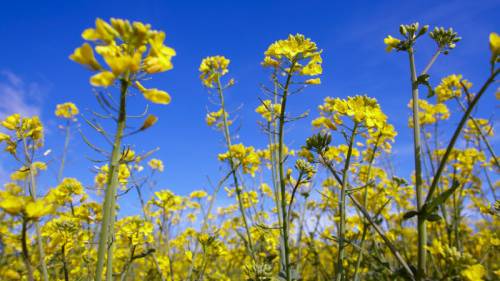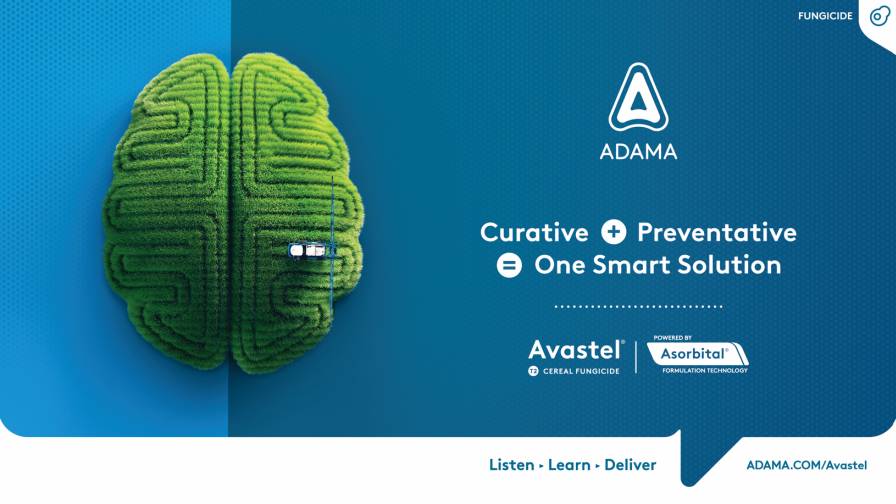State Of The Industry: Can Crop Protection Come Back?
There are three industries thought to be recession proof: Agriculture, healthcare and so-called vice industries, namely tobacco and alcohol. The reasons are simple: People need to eat; they still get sick, and they are reluctant to go without their worldly appeasements.
So as the conventional wisdom goes, if you make products or services that feed into these industries, then your business should be insulated from recession as well. Pesticides, fertilizers and other crop input producers and distributors should be poised to capitalize this human reality. And they have, at least they have for as long as we have been tracking the segment.
The crop protection industry has been increasing in value and volume ever since modern agriculture has been bolstering yields and allowing farmers to feed more people while cultivating the same area. More productivity bolstered farm incomes and food security for their respective regions, thereby allowing growers to buy more crop input technologies.
The symbiotic relationship has helped fuel year-over-year record profits, until 2009, when a host of factors contributed to lower global pesticide sales, which fell 6.5%.
While the decline in revenues has been attributed largely to a one-time supply anomaly, many businesses aren’t so sure the traditional crop protection market will ever return to the rate of increase it saw during various green revolutions around the world. Moreover, greater biotechnology adoption and stricter environmental and regulatory standards could change usage rates permanently.
Almost 40% of respondents to the Farm Chemicals International State of the Industry Survey say the crop protection industry will be the same or smaller five years from now. Even after taking into account the margin of error, about one in three respondents predict a stagnation in the traditional chemical sector. And the reasons are well documented.
• About The Survey
Why Is Global Value Shrinking?
Without a doubt, the largest contributor to shrinking global revenues is lower herbicide prices, specifically glyphosate. The rollercoaster ride of glyphosate is well documented. A temporary reduction in supply combined with historic usage to keep pace with Roundup Ready crops resulted in some of the highest glyphosate prices on record in 2008.
Post-patent suppliers enjoyed windfall profits as demand continued to climb around the world. Glyphosate was so profitable that many Chinese producers — some small startups and others launching glyphosate businesses to expand on other chemical manufacturing businesses — began to manufacture it to take advantage of huge returns and access to inexpensive raw materials, specifically phosphorus.
Reacting to the market, Monsanto, which always priced its Roundup at a premium above post-patent products, raised its price to ensure it wasn’t a cheaper option than generics. Monsanto, which actually added capacity at a US facility, was protecting its supply for American growers, who often rely on the branded chemistry. In a departure from this strategy, Monsanto recently announced that it would reduce the price of its glyphosate to the level of generic options.
As a result of the higher prices in 2008, the glut of smaller players were lured into the glyphosate business creating more supply than the world could use. Prices plummeted, and much of the supply bought at elevated prices is still in the supply chain, giving further apprehension to distributors and growers to delay purchasing decisions. Weather phenomenon (mostly heavy rains) in various parts of the world delayed plantings and subsequent glyphosate use in the 2008/09 season, further skewing supply/demand equations. Drought in much of Latin America curtailed applications as well.
Subsequently, prices today are a fraction of what they were during the boom times of 2008, when the agrochemical industry experienced a 25% gain in global sales. Glyphosate, with about $1 billion in market value, constitutes about 2.5% of the world’s total agrochemical value. Other herbicides followed a similar path, notably paraquat, 2,4-D and atrazine.
The trend of biotechnology dominating the traditional chemical market is expected to continue. More area is planted with GM seed every year, and now more than 25 countries grow at least one GM crop commercially. Much of the acreage is Roundup Ready, but the other large component is Bt crops, especially cotton. This adoption creates two realities: Roundup Ready crops generate more demand for its companion chemistry, but Bt crops diminish the need for some insecticides, thereby curtailing market share for traditional chemistries.
“Bt technology downsides our insecticide expectation and RR technology affects our selective herbicides portfolio,” says Anibal Mocchi of Tecnomyl Group in Paraguay. “To compensate for this, we are working to develop pre-mixes focused on resistant weeds and/or an increase in insects, as well as more efforts on fungicides for soybean diseases.”
Glyphosate resistance occurs in at least half of US states, and up to six weed species have shown some resistance to glyphosate, requiring other chemistries to manage weeds.
Almost one in five respondents to the State of the Industry survey say biotechnology has been curtailing revenue at their respective companies. On the positive side, almost 30% say biotechnology creates demand for their companion chemistries, but that demand lies in countries where GM seed is widely adopted, mainly in the Americas. And with registrations in the Americas still some of the most difficult to obtain and the price of glyphosate still depressed, global value is unlikely to rebound in 2010 and perhaps not in 2011, either.
While registrations in the Americas and Europe always have been expensive and cumbersome, hazard-based criteria threaten to make restriction even more precarious, especially considering the West’s influence with international agencies like the FAO and WTO. Environmental requirements in places like China and Southeast Asia are getting stricter as well. About 80% of respondents say environmental requirements and registrations are getting harder, and market access, market share and new market opportunities are getting more difficult as a result. The biggest concerns still surround equivalent registrations, especially in regions were harmonization does not occur and data cannot be shared.
“For generics there must be a fast track without field studies as the compound has undergone many studies,” says Rajan Venugopal of India-based Neogen Chemicals.
Many respondents point to Latin America as a very difficult place to register equivalent products, as well as the traditional difficulty in North America. Western Europe, without surprise, was another key region where registrations are changing rapidly because of the EU re-registration process. Traditionally, Indian producers have enjoyed reasonable market access in Europe during the past 30 years, but they are having increasing difficulty. And they are not alone. Re-evaluations by regulators was reported by almost half of respondents as the government policy that affects their business by regulators.
“In Western Europe the data requirements go up every year, making it more difficult for manufacturers from India to get into this market,” says Amit Momaya of Excel Crop Care.
Loans, credit and financing are getting scarcer as well. Almost one in five respondents to the survey say they need more loans to survive, compared to just one in 10 last year.
How Companies Adapt
Manufacturers are employing several different strategies to combat the changing times. First, many manufacturers are branching out into new products, creating new formulation facilities and creating more alternatives to the current landscape of pesticide options.
About two-thirds of respondents plan to develop new product lines in 2010; more than one-third will construct new facilities to do so.
Tecnomyl Group of Paraguay is constructing new formulation facilities to capitalize on broader use of EC, SL, SC, WG and SG formulations of fungicides, herbicides and insecticides. The major driver is soybean sustainability throughout the region.
Mohamed Elshafei of Chema Industries is looking to expand product lines as well, mainly new SC and WDG formulations of insecticides.
“We decided on this development due to increasing demand on new safer and environmental friendly formulations.” Elshafei says.
Companies are also looking for greater market access in emerging markets to help compensate for lower revenues.
But ultimately, although a lot of reservations exist about the health of the industry, expert observers and participants are expecting a modest increase of 1%-2% in 2010.
Additionally, our survey reveals that revenues are on the rise for a good many companies. Almost 80% expect their revenues to be higher in 2010.






